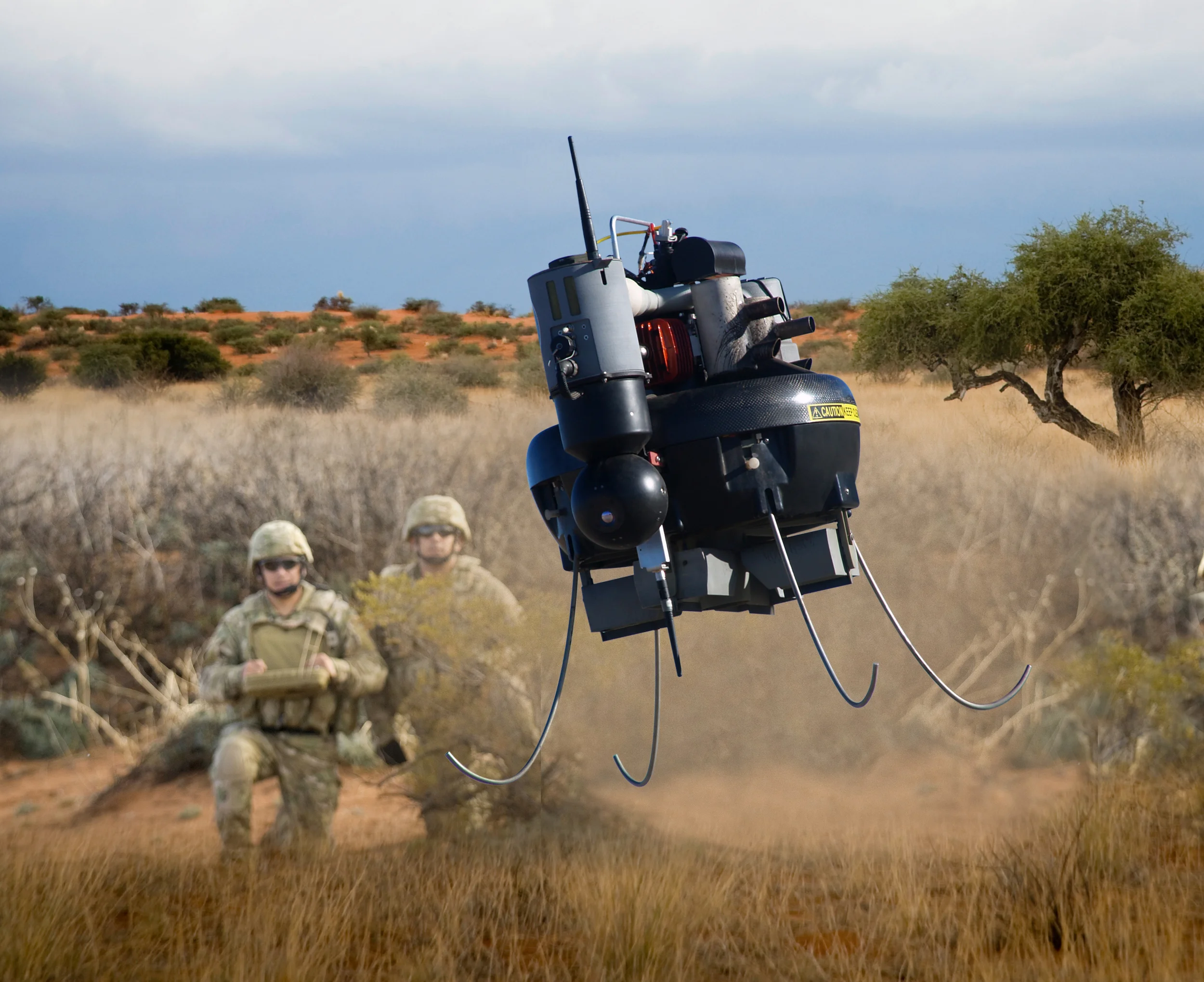The term micro air vehicle (MAV) refers to a new type of remotely controlled aircraft (UAV) that is significantly smaller than similar aircraft's, obtainable by using state of the art technology. The target dimension for MAVs today is approximately 15 centimeters (six inches) and development of insect-sized aircrafts is reportedly expected in the near future. Potential military use is one of the driving factors, although MAVs are also being used commercially and in scientific, police, and mapping applications.
While AVID's expertise spans all differing types of MAVs such as fixed wing models, insect-like (flapping wing) models, and rotary wing models, AVID has a particular design and deployment success in rotary (or ducted fan) models.
About AVID EDF-8
AVID EDF-8 is a micro-aerial-robot platform designed to navigate indoors and in tight spaces. In addition to providing significant lift, the duct provides safety by shrouding the high speed fan. This vehicle can carry up to a 1 pound payload to meet the customer’s requirement. It is a soccer ball-sized ducted-fan UAV capable of vertical takeoff and hovering flight. The vehicle is a UAV platform which has endless applications, especially for the dull, dangerous and dirty jobs such as performing ballast and fuel tank inspections, eliminating the need for people to enter the hazardous tank environment, while reducing time and costs. The ducted-fan architecture of AVID EDF-8 makes it compact, easy to deploy, and more cost effective than other comparable platforms.
About AVID Watchman
AVID’s “Watchman” ducted fan VTOL UAS is a Tethered Unmanned Aircraft System (Te-UAS) is a growing segment of unmanned systems business. The ability of the tether to provide an indeterminant endurance and also provide much greater data rate and secure communications channel between the UAV and the ground station are demonstrating great utility.
About ArgusElite®
ArgusElite® is a fully integrated UAS for hazmat response and emergency management.
It is equipped with nine chemical, radiological, and spectral Electro-Optical/InfraRed (EO/IR) sensors that can be used to identify and assess hazardous materials safely, quickly and accurately. The drone is also capable of transmitting live video that provides total situational awareness of the incident area for search and rescue (SAR) operations in difficult terrain, at night, and in hazardous conditions over land or water.
T-Hawk Success Story
AVID, in subcontract with Honeywell, assisted in the design of the first-ever deployed VTOL (Vertical Take-Off and Landing) ducted-fan micro air vehicle (MAV) as part of an accelerated DARPA project. AVID provided unique design expertise, as well as comprehensive design and analysis tools. The company supplied aerodynamic performance analysis for the vehicle and designed many of the aerodynamic components including the fan, stators, and control vanes. In 2007, the MAV was successfully deployed to Iraq and Afghanistan to assist US troops by identifying Improvised Explosive Devices (IEDs) from the air. It has logged more than 10,000 flights in missions that included explosive ordnance disposal exercises in Iraq. In 2011, T-Hawk was deployed in Japan to assist in the assessment of the nuclear facilities damaged after the devastating earthquake and tsunami. T-Hawk’s hover and stare ability offered a safe way to monitor the disabled Fukushima Daiichi nuclear plant without putting personnel at risk. The MAV will also be used to help ground vehicles navigate their way around obstacles.
AVID was named Lead for the aerodynamic configuration development and air-framing of the US Army’s BCTM Class I increment II vehicle. This lineage of ducted fan vehicles shows an increasing knowledge and maturity of design that is evidenced by an expanded design space and use of optimization techniques to satisfy challenging constraints. In March 2011, the MAV made its first successful test flight. Learn more about T-Hawk.

